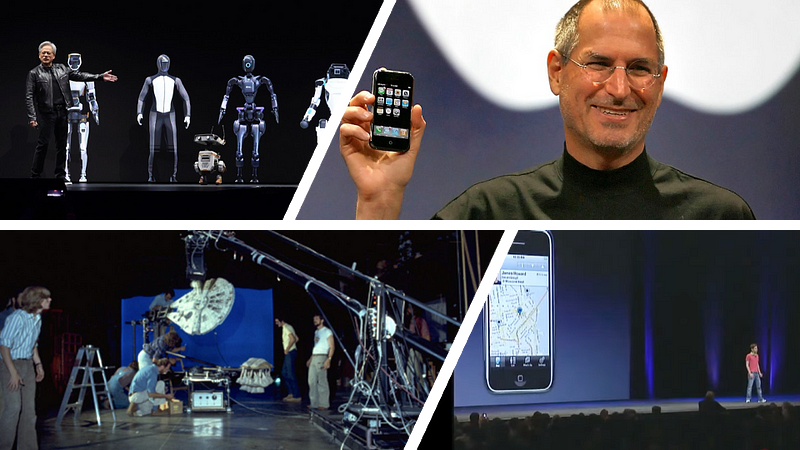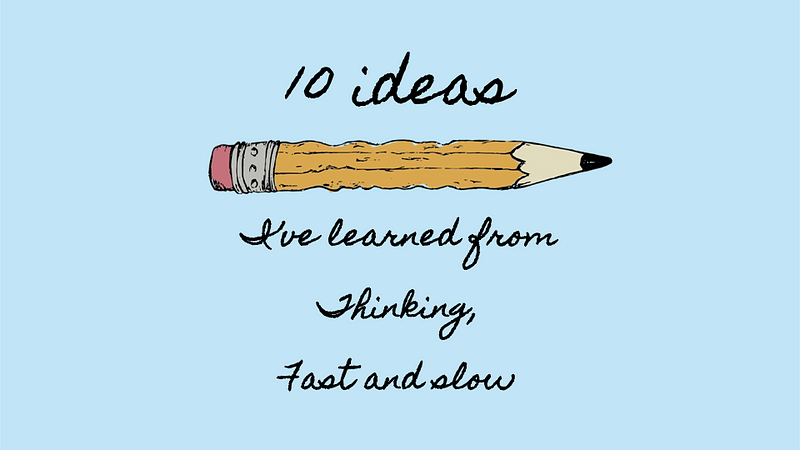Why Boeing needs Experience Custodians more than ever
And how we can learn about the customer-centric approach from Zappos.
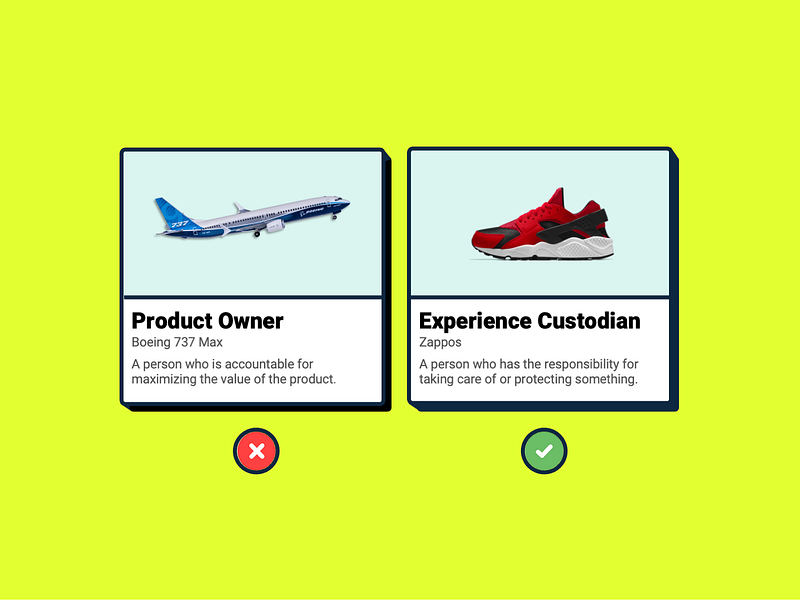
Boeing has been in the news lately, but for all the wrong reasons. What started out as two fatalistic crashes that killed 346 people in 2018 and 2019 continued five years later when a series of mishaps persisted in 2024.
The most dramatic aircraft incident began at the start of the year with a gaping hole at the side of the aeroplane, leaving passengers literally clinging to their lives as Alaska Airlines made an emergency landing. The reason? There were four missing key bolts from the door plug, which triggered the entire panel to blow out of the plane.
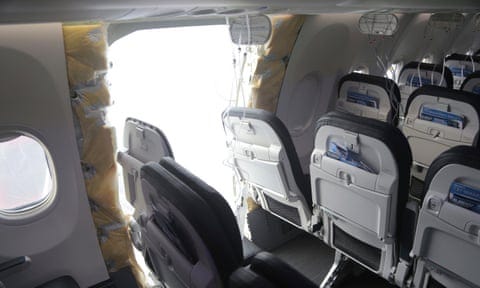
An old way to fail
Connect the dots of previous Boeing accidents, and you will realise that the Boeing 737 Max has been in the same spotlight. How could such a product continue to exist despite its earlier downfall? The Executive Fellow at Harvard Business School, Bill George, attributed a few factors:
- Former CEO Philip Condit made a pivotal shift in Boeing’s culture by acquiring McDonnell Douglas in 1997. While Boeing prioritised engineering excellence, McDonnell Douglas emphasised cost-cutting and updating older aircraft models, diverging from Boeing’s approach.
- Additionally, in 2001, Condit relocated Boeing’s headquarters to Chicago, aiming to secure tax credits. However, this move distanced corporate executives from engineering and product decisions, causing friction with Seattle-based engineers.
- Subsequent CEO Stonecipher prioritised maximising profits from existing models over designing new aircraft, opting to buy back Boeing stock with generated cash instead.
- By 2011, Boeing faced stiff competition from Airbus’s A320neo, leading then-CEO McNerney to pursue a five-year upgrade programme for the 737 MAX instead of designing a new aircraft. Cost-minimization decisions, including avoiding pilot retraining, were prioritised over long-term investments.
- Short-term fixes, like the 737 MAX’s software update in 2015 to address stall issues, resulted in compromises and undisclosed changes. These decisions prioritised avoiding further certification hurdles over transparency and safety.
- Boeing’s failure to ground the 737 MAX fleet led to FAA intervention, triggering prolonged regulatory scrutiny and design alterations lasting 20 months. This delay left customers waiting for essential aircraft, impacting Boeing’s reputation and market position significantly.
Besides the Boeing 737Max, the company prioritised stock prices over safety and quality with the 787 Dreamliner, allocating less than half the budget of previous planes and outsourcing to 50 suppliers. This led to a three-year delay and $25 billion over budget. Subsequent groundings of the aircraft due to onboard fires caused by defective batteries further highlighted Boeing’s oversight.
A bad way to grow
Ultimately, decisions focused on short-term gains led to substantial financial losses and reputational damage for Boeing. Since 2018, Boeing’s investors have lost $87 billion, while Airbus’s outselling of new aircraft orders continued consecutively within those same five years.
Boeing is not only an account of failed leadership and flawed culture; it is a company that lost its way when it became too fixated on short-term results by generating total shareholder returns while ignoring value for the customers.
Sadly, this is exactly how some businesses operate, affecting the decisions of their managers and product owners, especially if they come from business lines that are tied to financial key performance indicators, such as profits and cost savings.
No doubt, product owners may place a greater emphasis on customer metrics such as monthly active users (MAU) and churn rates. However, if they rely purely on numbers to drive their decisions, they will only have a part of the story without shedding light on the complete picture.
For some fortunate teams, the existence of user experience designers helps inform a qualitative aspect of customer outcomes. Assuming there is competency in the UX team, substantiating the voice of the customer with hard numbers exposes the true state of the product, whether users, as well as the network around them, truly reap the benefits that they are getting that will lead to the willingness to pay.
However, problems arise when the UX team is not competent or when the business environment or the product owner’s obligation to meet financial targets outweigh the desired outcomes of the consumers, leading to the eventual downfall of the overall experience in the long run.
A new way to think
Roger Martin, author of A New Way to Think, and former dean of the Rotman School of Management, pinpointed the nature of the insatiable desire of shareholders, leading to unrealistic expectations. Even if a CEO is successful within their tenure, the market will continue to prompt the leader or his successor to further “maximise” shareholder value until managers can’t continue to meet them. This is also known as the Peter Principle, which describes a phenomenon of successive performance until reaching a plateau of incompetency.
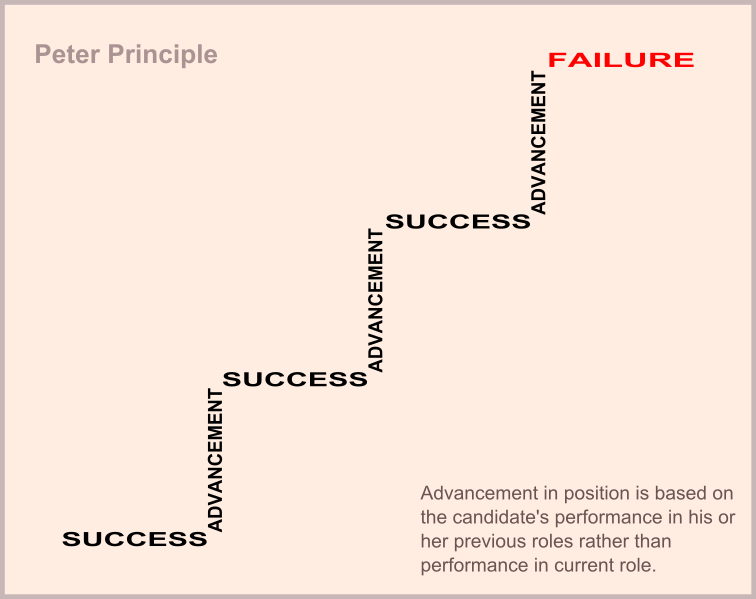
Instead of maximising shareholder value as a priority, Roger Martin advocated for companies to actually put customer satisfaction before shareholders. This will help to improve corporate decision-making because leaders are forced to improve the operations, products, and services provided. And by doing so, a long-term and steady growth in share price can ensue.
A new word to use
If we want to see improvements in our products with our customers, perhaps it is the right time for a change of roles. Rather than seeing the product or business as something we inwardly own, we can flip the narrative by providing a desirable experience that is worth ‘protecting’ or ‘upholding’.
The word ‘custodian’ is befitting in this situation. Defined as a person with responsibility for protecting or taking care of something or keeping something in good condition, the Experience Custodian represents the users in a corporate setting.
The issue with being called “product owner”
A semiotician (a person who studies the communication of meaning) will scrutinise the meaning of “product owner” and would find no association with the end user when applied in various context.
Even the definition of the product owner, a shared in the Scrum Guide, states that the person is accountable for maximizing the value of the product resulting from the work of the Scrum Team.
In this case, value can be subjective because it can be attached to various forms of value. If an organisation is not people-centric, we can see this value furtherest away from users, and the product owner will continue developing the product without the right vision and feedback.
This is most likely what happened to Boeing 737 Max, among many other factors in their leadership and culture.
It is more than placing an empty chair to represent the customer, as described in Amazon’s folklore. It is about speaking up and using the voice of the customer in the boardroom. Even better, it is about bringing the actual customer into a war room to hear about the experience they felt. Or it is about bringing the leaders closer to the customers.
And what better way to introduce another company that has won the hearts of both their customers and employees: Zappos.
The Zappos way to win.
Starting out as a shoe store, the late serial entrepreneur, Tony Hsieh, once energised his team to be a leader in customer experience. In his words,
“One day, we asked ourselves, ‘What do we want to be when we grow up? Do we want to be about shoes or do we want to be about something bigger and more meaningful?’ That’s when we decided that we really wanted to build the Zappos brand and be about the very best customer service and customer experience.”
And so Hsieh identified that, on average, their customers would telephone them at least once at some point. By handling the call well, there was an opportunity to create an emotional impact and a lasting memory. This became a company’s philosophy to invest in customer service, which then generates marketing through word of mouth rather than paid advertising.
Rather than outsourcing, which created inaccuracies, operational differences, and a lack of care for customers, Zappos took it upon themselves to make the entire company obsessed with customer service. Strategies such as free shipping ¹, return policies ², and 24/7 support within one click ³ are now industry norms that started with Zappos.
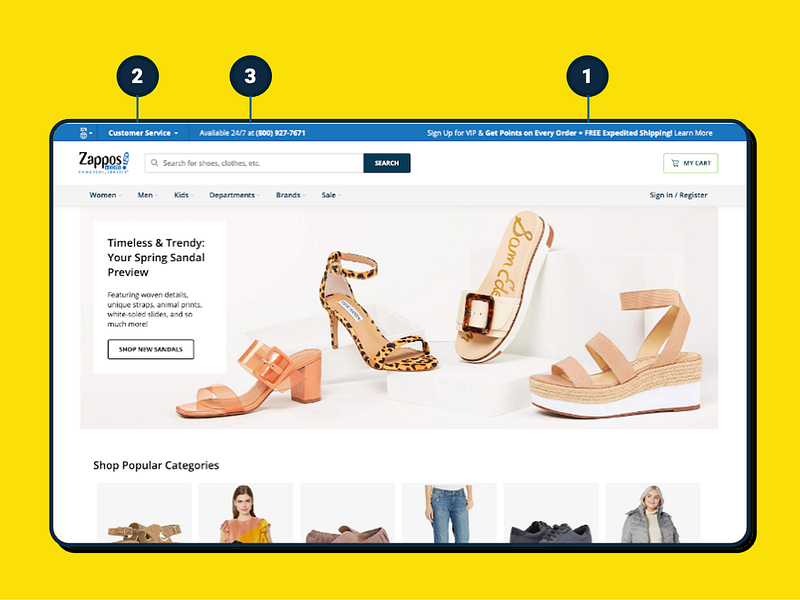
And yet, they went beyond what normal companies do, replacing typical average handling time with a unique metric called personal emotional connection (PEC). Calls were longer, some stretching as long as 6 hours. But the overall conversion of customers became more loyal as undivided attention was given to the company. Zappos was not only resolving customer issues; they were encouraging growth in customer lifetime value.
One incident really proves they’re serious about it. It goes like this: A lady bought a pair of shoes from Zappos for her mom. But then her mom passed away. When she reached out to Zappos to return the shoes, not only did they pick up the shoes for free, but they also sent her flowers and a note saying they were sorry for her loss.
The UX in Zappos
If we are not careful, our quick reflexes (ie. System 1 thinking) will kick in, dismissing Zappos to not have anything to do with UX/UI. Naysayers will say there is no digital experience in any of the examples stated here.
However, if you take time to dig deeper into Zappo’s company culture and mindset of approaching customer, readers will quickly realise that features are transferrable across channels.
To be more specific, just as how a digital interface is a touchpoint, so too is the call experience faced by a customer. And with the blurring of lines with multi-modality, creating an integrated experience with the same design principles become paramount.
What can be learned from Zappo’s non-digital strategies can be applied in a UX/UI setting too.
It was the various initiatives to protect the user’s experience that showed Zappos’s mastery of customer experience and e-commerce, which ultimately led to $1 billion in gross merchandise sales in 2008 and an acquisition by Amazon for 1.2 billion in 2009.
“Take making money out as part of the motivation or equation, and then it’s all about working with people that you would enjoy hanging out with even if you weren’t working together,” said Hsieh.
The answer is simple. By protecting both the customer’s and employee’s experience, positive emotions will translate into staying customers and better returns. Above all, it was the human-centric culture that made Zappos possible.
A letter from one of the customers suggested that Zappos venture into the airline business. It prompted Hsieh to mention these words: “In 20 years, I wouldn’t rule out a Zappos airline where we offer the best customer service.” Tragically, he passed away in an accident in 2020 without seeing through his words, but his legacy of customer satisfaction lived on.
Zappos will have until 2030 to show if they will eventually become an airline rooted in customer service. Or perhaps it is time for Boeing to enter e-commerce to learn the ropes of user-centricity from Zappos. Likewise, we as designers can embrace a people-first approach by being Experience Custodians and going the extra mile for our users.
References
George, B. (2024, January 24). Why Boeing’s Problems with the 737 MAX Began More than 25 Years Ago. HBS Working Knowledge. https://hbswk.hbs.edu/item/why-boeings-problems-with-737-max-began-more-than-25-years-ago
Guardian News and Media Limited. (2024, March 4). John Oliver calls for new leadership of Boeing: “Fix the culture that you have destroyed.” The Guardian. https://www.theguardian.com/tv-and-radio/2024/mar/04/john-oliver-boeing
Hsieh, T. (2010, July). How I Did It: Zappos’s CEO on Going to Extremes for Customers. Harvard Business Review. https://hbr.org/2010/07/how-i-did-it-zapposs-ceo-on-going-to-extremes-for-customers
Singh, M. (2024, March 15). Man who was almost sucked off plane among group suing Alaska and Boeing. The Guardian. https://www.theguardian.com/world/2024/mar/14/passengers-sue-alaska-airlines-boeing-airplane-panel-blowout
Tjan, A. (2010, July 14). Four Lessons on Culture and Customer Service from Zappos CEO, Tony Hsieh. Harvard Business Review. https://hbr.org/2010/07/four-lessons-on-culture-and-cu
